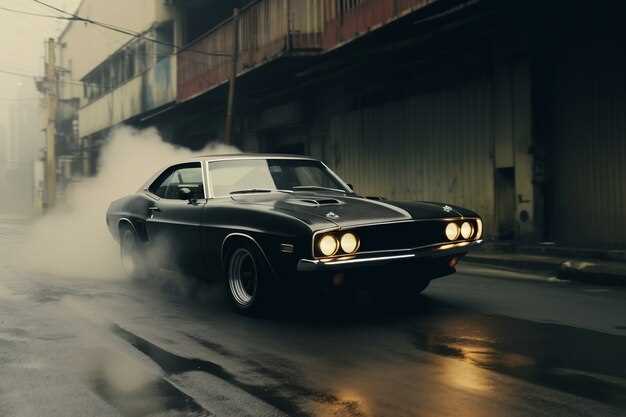
The term “muscle car” evokes a sense of nostalgia and a fervent passion for automotive performance. Originating in the United States during the late 1960s, muscle cars symbolize power, speed, and a distinctive cultural identity. They are not merely vehicles; they embody an ethos that celebrates raw horsepower and an unadulterated driving experience.
At the core of a true muscle car is its robust engine, typically featuring a large displacement V8 configuration that delivers exhilarating torque and acceleration. This powerful engine is complemented by a rear-wheel-drive layout, which enhances performance and handling. True muscle cars are engineered for straight-line speed, often boasting impressive quarter-mile times that have become a benchmark for enthusiasts.
In addition to performance, muscle cars are characterized by their aggressive styling and bold designs. From wide fenders to long hoods, these vehicles are visually striking, often featuring iconic elements such as hood scoops and dual exhausts that emphasize their raw power. The aesthetic appeal is matched by a throaty exhaust note, which further contributes to the legendary status of muscle cars in automotive culture.
Lastly, the sense of community that surrounds muscle car ownership adds to its allure. Enthusiasts gather at car shows, races, and club events, sharing a collective appreciation for the engineering feats and historical significance of these vehicles. A true muscle car is more than just a car; it represents a lifestyle and a passion shared among its owners and admirers alike.
Performance Metrics: What Defines Muscle Car Power?
Muscle cars are synonymous with raw power and performance, and several key metrics help define this exhilarating characteristic. Horsepower remains the most recognizable measure, representing the engine’s ability to perform work over time. High horsepower figures, typically above 300 for modern muscle cars, contribute significantly to a vehicle’s acceleration and top speed.
Torque is another critical metric, often overshadowed by horsepower but equally vital for overall performance. Torque provides the driving force necessary for initial acceleration. Muscle cars are known for their high torque ratings, which enable impressive off-the-line starts and robust passing power at higher speeds. This feature contributes to the thrilling driving experience for which muscle cars are celebrated.
0-60 mph acceleration time is a commonly used performance benchmark. This metric measures how quickly a vehicle can accelerate from a complete stop to 60 miles per hour. For muscle cars, a time under 5 seconds is often considered indicative of high performance, showcasing the vehicle’s ability to hit significant speeds quickly, a desirable trait in this category.
Quarter-mile time is another performance metric that is closely watched in the muscle car community. This measurement represents how quickly a car can cover a quarter-mile distance from a standing start. Times under 13 seconds are often associated with serious muscle cars, reflecting the vehicle’s straight-line speed and overall capability on the drag strip.
Top speed is also a critical performance indicator. While many muscle cars excel in acceleration, their maximum speed provides insight into the vehicle’s capabilities at sustained high velocities. Performance-oriented muscle cars often push boundaries, with top speeds that can exceed 150 mph.
Finally, the power-to-weight ratio is an essential aspect of muscle car performance. This metric compares the car’s horsepower to its weight, allowing for an assessment of how effectively the vehicle can use its engine power. A lower weight coupled with higher horsepower typically results in better acceleration and agility, enhancing the driving experience.
In summary, the power of a muscle car is defined by a combination of horsepower, torque, acceleration times, quarter-mile performance, top speed, and power-to-weight ratio. Collectively, these metrics create a compelling picture of the sheer performance capability that enthusiasts and drivers expect from true muscle cars.
Design Elements: Identifying the Look of a Muscle Car

Muscle cars are not just about power; their design elements play a crucial role in defining their character. A true muscle car boasts several distinctive features that set it apart from other vehicles.
- Bold Stance: Muscle cars typically exhibit a wide and aggressive stance, achieved through a low ride height and broad wheelbase. This contributes to both aerodynamics and an intimidating road presence.
- Long Hood and Short Deck: The design often features a long hood, which houses the powerful engine, paired with a shorter rear deck. This classic proportion emphasizes the muscle car’s performance capabilities.
- Air Intakes and Vents: Functional air intakes and hood vents are common, enhancing cooling for the engine while also adding to the aesthetic appeal. These elements signal to observers the car’s power under the hood.
- Distinctive Grilles: A bold and prominent grille design is vital. Many muscle cars sport large, aggressive grilles that hint at their performance-oriented nature, often featuring chrome accents.
- Wide Tires and Wheel Arches: Muscle cars are fitted with wide tires to maximize traction. The exaggerated wheel arches not only accommodate these tires but also enhance the vehicle’s muscular appearance.
- Color Schemes: Bright and bold colors are traditional for muscle cars. Classic hues such as red, orange, and yellow often dominate, further emphasizing their sporty identity.
- Rear Spoilers: Many modern muscle cars come equipped with rear spoilers that aid in downforce at high speeds, while also contributing to the sporty look that enthusiasts admire.
These design elements collectively create the unmistakable look of a muscle car. A blend of aesthetics and engineering reflects the powerful performance and aggressive nature that enthusiasts expect from this iconic category of vehicles.
Cultural Significance: How Muscle Cars Impact Automotive Enthusiasts

Muscle cars are more than just high-performance vehicles; they represent a cultural phenomenon that has significantly impacted automotive enthusiasts over the decades. Emerging in the late 1960s, these cars encapsulate the spirit of rebellion and freedom, resonating with a generation who sought to break away from conventional norms. For enthusiasts, muscle cars symbolize power, style, and the American dream, fostering a deep emotional connection that transcends mere mechanical appreciation.
The allure of muscle cars lies in their distinct style and performance capabilities. Vehicles like the Ford Mustang, Chevrolet Camaro, and Dodge Challenger have become icons, each carrying a legacy that attracts passionate followers. These cars are often seen as embodiments of individualism and personal expression, inspiring enthusiasts to modify, restore, and showcase their vehicles, thereby creating a vibrant community. Car shows, meet-ups, and online forums provide platforms for enthusiasts to share their experiences, technical knowledge, and admiration for the craftsmanship behind these powerful machines.
Moreover, the cultural significance of muscle cars extends beyond personal enjoyment. They have played a crucial role in shaping automotive culture through motorsport and media. Events like drag races and classic car events celebrate these high-performance vehicles, while films and television shows have immortalized them in popular culture, further solidifying their status. Iconic scenes featuring muscle cars chase scenes have contributed to a broader appreciation for the automotive industry, encouraging new generations to get involved in car culture.
The sense of nostalgia linked to muscle cars also fosters a unique bond among enthusiasts. Many have fond memories of their first car or experiences shared with family and friends, often linked to muscle car ownership. The passing down of these vehicles from one generation to another underscores their importance in family histories and collective memories, reinforcing a sense of belonging within the automobile community.
Furthermore, despite challenges like changing environmental regulations and the rise of electric vehicles, muscle cars continue to evolve while maintaining their fundamental characteristics. This adaptability showcases the enduring appeal of muscle cars, ensuring they remain relevant in contemporary automotive discussions. Their significance lies not only in their historical context but also in their ability to inspire innovation and passion among automotive enthusiasts today.
